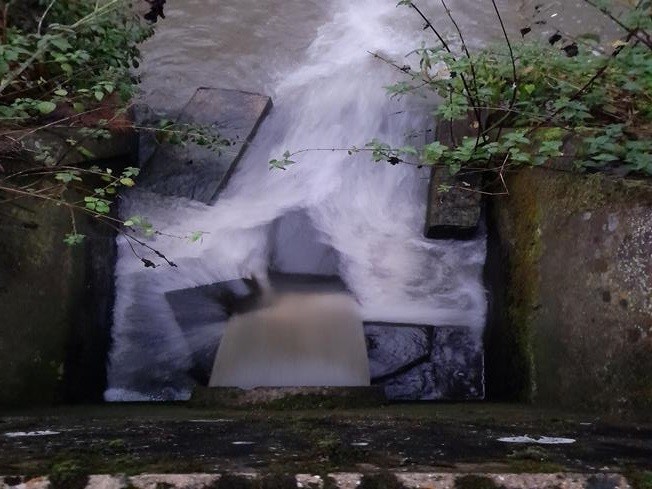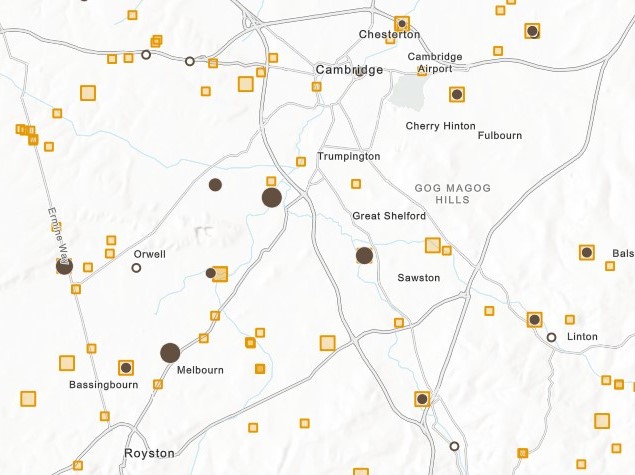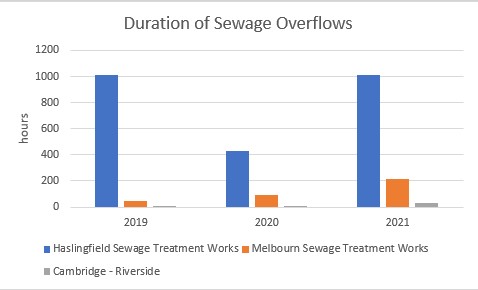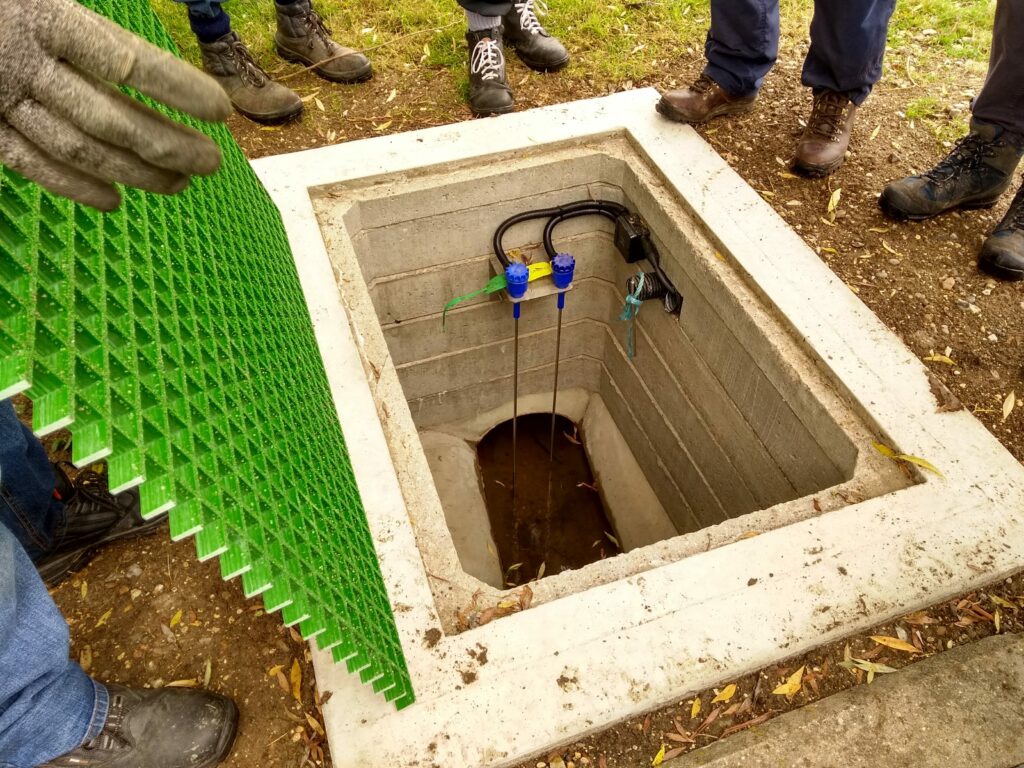The recently released data on sewage overflows shows a shocking increase in the reported discharges from Cambridge City and Haslingfield Sewage Works.
During 2023, the aging and overloaded sewage works at Haslingfield, 5km upstream from Cambridge was spilling sewage for 3000 hours, in other words for 34% of the year. Cambridge Sewage Works, just downstream of the city, was spilling sewage into the river where our boat race crews train, for 17% of the year.
As the graph below shows, both were dramatic increases from previous years.

We have asked Anglian Water what is going on
“Our EDM monitors and investments are helping reduce spills and have moved the dial in the right direction. Spills would have been considerably higher without it. However, it is important to acknowledge the exceptionally wet weather we had in 2023, particularly late in the period, which meant that 70% of our spills were in Q4 alone and in stark comparison to the extremely dry year in 2021, as climate change continues to result in more extreme weather events.”
On 9 April 2024, they informed us that at Haslingfield “the EDM point (ie the sensors that detect a spill) was modified a year ago in an attempt to reduce impacts from standing water whilst ensuring that we did not miss spills. However, it has become apparent that following prolonged periods of wet weather that standing water can rise to reach this probe, therefore further modifications are being assessed”
When Cam Valley Forum visited Haslingfield sewage treatment works in 2022 we were shown these sensors, which had been relocated from their previous position in September 2021. Subsidence had meant that in the previous position they were sitting in a puddle, rather than recording spills. It’s disappointing if they’re still not correctly positioned to give meaningful results.
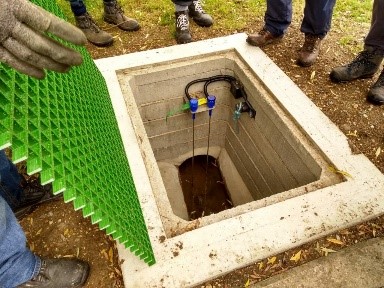
It is true that late 2023 was wet, but to assess how exceptional this is, we have looked at the Met Office weather data for Cambridge, which has been monitored at NIAB (the National Institute for Agricultural Botany) every year since 1959.
The rainfall data shows that in 2023 Cambridge was a little wetter than the previous few years, but there only seems to be a vague relationship between the annual rainfall and the duration of sewage overflows during the year.

The slightly higher rainfall in 2023 in comparison to 2020 doesn’t seem sufficient to explain the dramatic increase in sewage spills. So what’s going on?
The Met Office rainfall data for Cambridge, shows that March and October 2023 were both very wet, which might have been expected to create problems. But these 2 wet months can’t excuse Haslingfield Sewage works spilling sewage for 34% of the year.
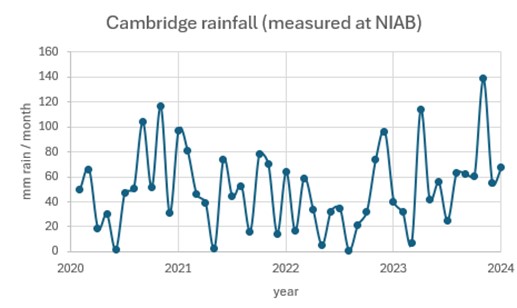
Water companies are allowed to spill sewage into the river when conditions are “exceptionally” wet, but the definition of “exceptional” is unclear.
Looking back over the last 65 years, months as wet as the wettest months in 2023 have happened at intervals, but were they “exceptional” enough to make it legally permitted for Anglian Water to spill sewage into the River Cam? We’ll leave that question for the lawyers to answer.

However, as the longterm graphs show, Climate Change is making weather that was once “exceptional” seem “normal” so our water companies need to be urgently upgrading the infrastructure to cope. This applies both to our sewage infrastructure, which in Cambridge is the responsibility of Anglian Water, and fresh water supply, which is the responsibility of Cambridge Water.
Cambridge’s wettest months seem to be becoming more frequent and wetter, and the rate of increase might itself be increasing. (In the graphs above and below, the longterm trendlines are shown by red dashes)
Winter rain doesn’t eliminate the risk of the summer pain from drought.

The same NIAB dataset shows that the average monthly temperature in Cambridge has risen by about 3C since the 1990s. Winter temperatures have increased even more dramatically: they are now around 6C higher than during the freezing cold winters of the 1980s. This is probably mainly due to climate change, but Cambridge’s increasing urbanisation may be contributing slightly.
These changes increase the risk of drought and of plant pests surviving the winter, while significantly changing our natural habitats and the species that can live here.
They also increase people’s desire to swim in the river, which is another reason why we want our water companies to make the necessary investments so that sewage spills become truly “exceptional” events.
Underlying everything is the growing threat from climate change, so we all need to take urgent action to reduce our contribution to the problem by cutting our carbon emissions. Unless we do, no amount of investment will be able to prevent the horrific consequences.

